Our USA Magazine
PO Box761
Sidney, NE 69162
admin
The First American Cookbook
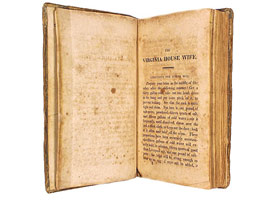
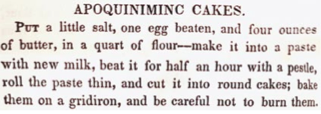
Have you ever held something in your hands that was approaching 200 years old? This 1838 edition of The Virginia Housewife, or, Methodical Cook by Mary Randolph (first published in 1824) is a book that’s practically antediluvian by American standards. The dark, cracked cover of the volume opens to reveal page after page of stained, dripped upon, fingerprinted recipes. A cook held this volume in her hands nearly two centuries ago and the pages are marked with her daily labor.
Before the likes of Mrs. Randolph, American housewives were dependent on imported British cookbooks. Randolph’s book was the second major cookbook published in the States and helped shape American culinary identity. Its pages include recipes using native ingredients, like Pumpkin Pudding and Corn Meal Bread; it also has the first published American recipes for Macaroni and Cheese and Vanilla Ice Cream. But most inter- esting are the regional specialties like Gumbo; Dough Nuts – A Yankee Cake; and a Southern specialty called Apoquiniminc Cakes.
Apoquiniminc Cakes are better known as “beaten biscuits,” wherein you smack the biscuit dough with a pestle, rolling pin, mallet, or even the blunt end of an axe. One cookbook author called beaten biscuits “the most laborious of cakes” — so why would someone want to go to the trouble? Allegedly, all that whacking produced a dough that would rise in the oven, producing a light and fluffy cake without leavening like yeast or baking soda. I had to try it.
I mixed a bowl of flour, salt, butter, eggs, and enough milk to make a moist dough. I turned it out onto a cutting board and, lacking a pestle, began whapping it with a rolling pin. As the dough flattened under my attacks, I folded it in half and repeated the process. Five minutes in, I was already sick of it. “Will you come in here and put on The Colbert Report?” I whined to my roommate. “I have to keep beating this dough and I’m bored.”
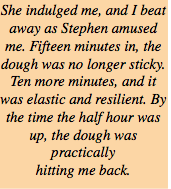
Randolph specifies that the biscuits be baked on a gridiron, and warns “be careful not to burn them.” A gridiron in the 19th century was a cast iron grill, designed to be used in a hearth or open fireplace. A cook in Randolph’s day would have lit a large fire to cook, waited until the flames died down, and then scraped a pile of hot coals under her gridiron. Then, she would be ready to bake — grill, really — her cakes. These were the days before stoves were readily available.
Cooking over flames or hot coals would deliver very different results than the heat of an oven, but I did not have immediate access to a gridiron or an open fireplace, so I improvised: I used a wire cooling rack placed over a gas stovetop burner. I lit a low flame and cooked the biscuits until they began to puff up, their centers bulging, and began to brown.
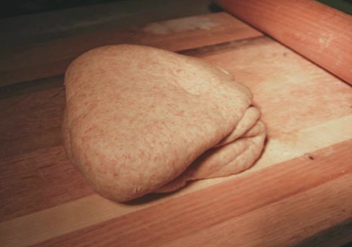
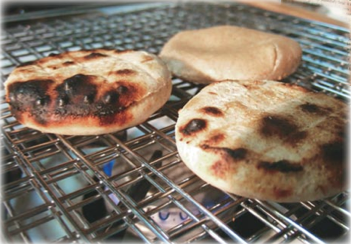
I pulled one off my “gridiron” and tried it, slathered in butter. The outside was crispy, and crackled away in my mouth with the sweet and smoky flavors of flame-toasted bread. The inside was dense but not heavy, and a little chewy — overall, the texture was very similar to a soft pretzel, and very, very pleasant.
It may seem odd, but according to culinary historian Laura Schenone of A Thousand Years Over a Hot Stove, these biscuits were considered a delicacy and a sign of wealth; the average housewife would not waste half an hour of her busy day beating biscuits. Remember, this was Virginia in the first half of the 19th century; having those biscuits on the dinner table meant you could afford to have the labor done by someone other than yourself: slaves. A simple recipe can reveal more about a nation’s history than you would expect.
This story was originally published on Etsy’s Blog, http://etsy.com/blog. Used with permission of the author, Sarah Lohman.
Copyright © 2009-2014. All rights reserved.
Our USA Magazine
PO Box761
Sidney, NE 69162
admin
